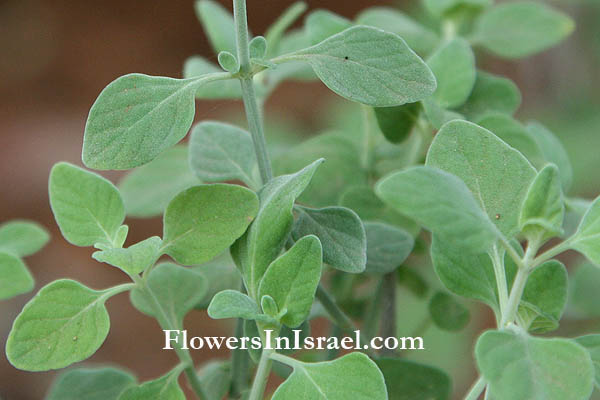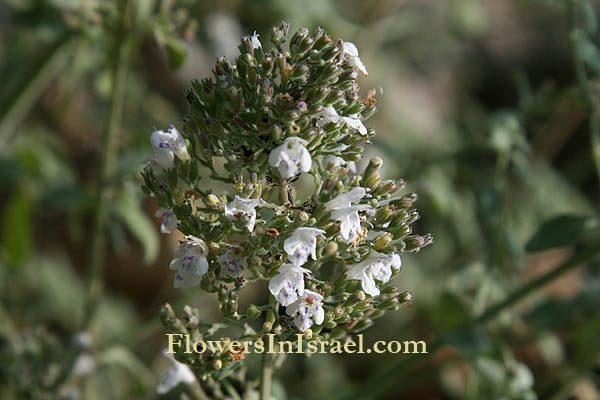White savory, White-leaved savory, Tea Hyssop,
Hebrew: זוטה לבנה, Arabic: عشب الشاي
| Scientific name: | Micromeria fruticosa (L.) Druce | |
| Synonym name: | Micromeria serpyllifolia (M.Bieb.) Boiss. | |
| Common name: | White micromeria, White savory, White-leaved savory, Tea Hyssop | |
| Hebrew name: | zuta levana, זוטה לבנה | |
| Arabic name: | ashab a-shai, عشب الشاي | |
| Family: | Labiatae / Lamiaceae, שפתניים |

Location: Ramat Hanadiv (“heights of the benefactor”) |
| Life form: | Chamaephyte | |
| Stems: | 40-70 cm; erect, minutely whitish-velutinous; branches divaricate | |
| Leaves: | Opposite, lanceolate to ovate-orbicular; entire margin | |
| Inflorescence: | Verticillasters with 10-30 flowers, lax, greatly exceeding subtending leaves | |
| Flowers: | Calyx, obovoid-tubular, villous in throat; corolla, White | |
| Fruits / pods: | Nutlets obtuse | |
| Flowering Period: | February, March, April, May, June | |
| Habitat: | Hard rock outcrops | |
| Distribution: | Mediterranean Woodlands and Shrublands | |
| Chorotype: | Mediterranean | |
| Summer shedding: | Perennating |

Location: Ramat Hanadiv (“heights of the benefactor”) Derivation of the botanical name: Micromeria, mikros (Greek), "small", meris, "a part"; the flowers of these low-growing herbs and sub-shrubs are very small. fruticosa, frutex (Latin), "a shrub", therefore, shrubby, bushy. serpyllifolia, with leaves like Thymus serpyllum. The Hebrew name: זוטה, zuta, a small thing, trifle.
See the list of Medicinal herbs in Israel, the parts used and their medical uses to treat various diseases. 
|